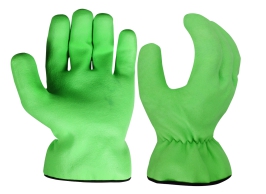1. Many types of hand protective gloves should be selected according to the protective function. First of all, the protective object should be clearly defined and then carefully selected. For example, acid and alkali resistant gloves include strong acid (alkali) resistance, low concentration of acid (alkali) resistance, and resistance to organic solvents and chemical agents, but they are different. Therefore, you should not use it in order to avoid accidents. Therefore, you do not use it indiscriminately to avoid accidents.
2. Before using waterproof and acid and alkali resistant gloves, carefully check whether there is damage on the surface. The simple method is to blow air into the glove, hold the sleeve tightly by hand, and observe whether there is air leakage. If it leaks, it cannot be used.

3. Protective gloves such as rubber and plastic should be rinsed, dried, and protected from high temperature during storage. Sprinkle talcum powder on the product to prevent adhesion.
4. Insulating gloves should be inspected regularly for electrical insulation properties. If they do not meet the requirements, they cannot be used.
5. Contact with strong oxidizing acids such as nitric acid, chromic acid, etc. due to strong oxidation, the product will be brittle, discolored and early damaged. The high concentration of strong oxidizing acid may even cause burning loss.
6. Latex dipped gloves are only suitable for sulfuric acid with low concentration of weak acid and various salts. They shall not contact with strong oxidizing acid (nitric acid, etc.).















